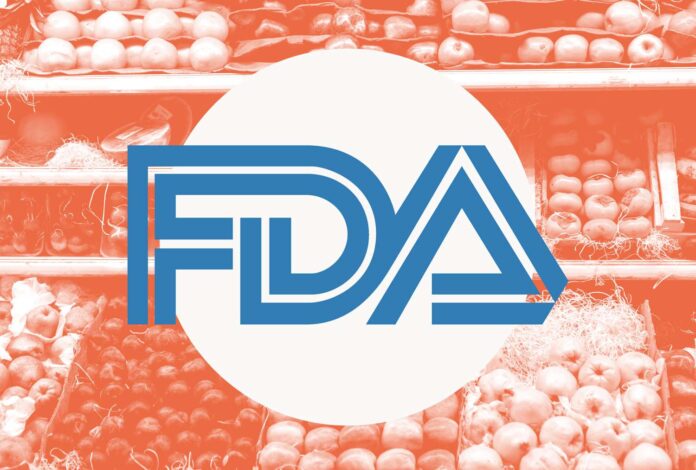:max_bytes(150000):strip_icc():format(jpeg)/The-FDA-Is-Launching-New-Traceability-Rules-for-Added-Food-Safety-FT-BLOG0924-fc74cd76663442cc941500b31193b299.jpg)
On January 20, 2026, the Food and Drug Administration’s (FDA) new traceability rules — dubbed the Food Traceability Final Rule — will go into effect.
The rule, the FDA explained, “establishes traceability recordkeeping requirements, beyond those in existing regulations, for persons who manufacture, process, pack, or hold foods included on the Food Traceability List.” The new requirements will also “allow for faster identification and rapid removal of potentially contaminated food from the market, resulting in fewer foodborne illnesses and/or deaths.”
All that sounds great for consumers, especially when you consider that the Centers for Disease Control and Prevention estimates that 1 in 6 Americans (or 48 million people) gets sick, 128,000 are hospitalized, and 3,000 die of foodborne diseases per year. However, according to producers and sellers, just how these traceability rules will work is downright confusing. Here’s what consumers, producers, and sellers really need to know.
What is the FDA’s new traceability rule?
As the FDA explains, the rule is “a requirement that persons subject to the rule who manufacture, process, pack, or hold foods on the Food Traceability List (FTL), maintain records containing Key Data Elements (KDEs) associated with specific Critical Tracking Events (CTEs); and provide information to the FDA within 24 hours or within some reasonable time to which the FDA has agreed.”
What’s on the Food Traceability List?
The list includes cheeses (with the exception of hard cheeses, like Parmigiano-Reggiano), “shell eggs,” aka eggs from domesticated chickens, nut butters, cucumbers, leafy greens, herbs, melons, peppers, sprouts, tomatoes, tropical tree fruits (such as mango, papaya, mamey, guava, lychee, jackfruit, and starfruit,), fresh-cut fruits and vegetables, finfish (like tuna, mahi mahi, mackerel, amberjack, jack, swordfish, and yellowtail), crustaceans, mollusks, bivalve shellfish, and ready-to-eat deli salads. You can see the full list here.
Which parts of the rule are confusing people the most?
In September, the Reagan-Udall Foundation for the FDA released a report on three industry roundtables regarding the ruling. The participants in the invite-only roundtables called out three major areas of concern: awareness of the rules, labeling, and warehouse management capacity.
“Participants described low awareness of the rule and its specific requirements across the food system, especially among certain industry sectors, small and medium-sized suppliers, foreign suppliers, non-chain restaurants, and companies not connected to a trade association,” the report noted.
It added that these new requirements may be the very first time certain supply chain participants — like small restaurants and cafes — have had to provide information to the FDA, and they “may not routinely maintain or share data at the level the rule requires.”
Additionally, participants pointed out that there have been “multiple interpretations of the final rule, which may lead companies to mistakenly believe their current operations are sufficient for compliance.” As a possible solution for the issue, roundtable members suggested better education and more precise directions on how to implement the rules would help.
The industry representatives also raised concerns about the new traceability lot code (TLC) requirements included within the final rule, such as the “level of labeling and tracing activity necessary to generate the required information.” For example, some individuals thought that labeling and tracking at the “case level is essential to generate the required information,” though that isn’t explicitly required. They emphasized that there is a lack of standardization for TLCs, and highlighted that the rule relies on both labels remaining undamaged and there being labels available to print and add to their items at all.
Finally, there’s the issue of warehouses, which the roundtable members said may not have the capacity to oversee the new regulations, nor will warehouse managers all decipher the ambiguous rules in the same way. Right now, many in the food industry are interpreting the rule as needing a label on “every case of food,” which is then “scanned to produce the data [the] FDA may request of downstream entities to trace a lot through the supply chain.” This interpretation, they noted, “could potentially require significant increases in labor, equipment, and space, with significant associated costs.”
What are the next steps?
At the end of the roundtables, leadership at the FDA shared that it looks “forward to continued dialog about implementing the Food Traceability Rule and will solicit feedback through additional routes, including meetings, comments, and other public forums.” And… that’s really it.
The government body stated it’s willing to “participate as appropriate in a public-private partnership” if an opportunity presents itself that may help alleviate some of the stress put on producers and sellers by the new rules. It added that it “will continue to post regular updates and resources as the compliance date approaches” and that the foundation will “continue its support of the effort by helping to facilitate such engagement.”
For consumers, you just need to get ready for more labels — though this may not be the only new one affixed to your favorite products either. In September, Food & Wine reported on the FDA’s tentative plans to require the display of some nutrition information on the front of packaging (a format often seen in Europe and other parts of the world already.)
As previously reported, the FDA noted that the front-of-package labels will give consumers “simplified, at-a-glance nutrition information” to help them make faster and more informed decisions. However, unlike the traceability rules, this new regulation hasn’t been pushed through just yet, but you can follow its progress here.



